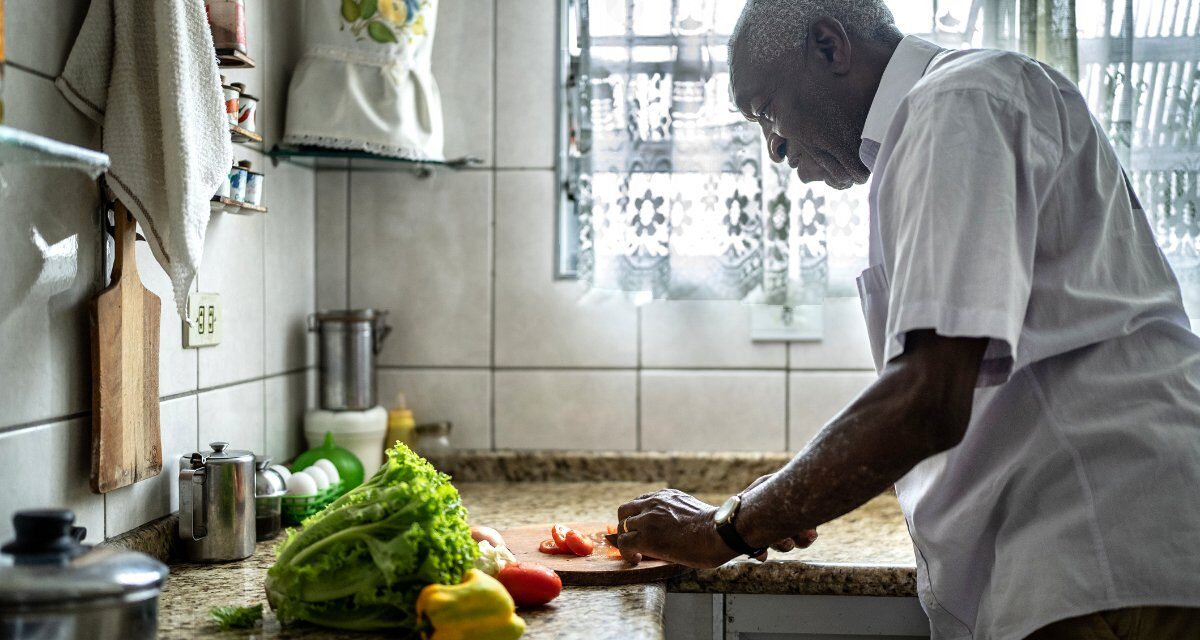
I met Henrietta, a retired Washington, D.C. resident in her 60s in a meeting of the Client Leadership Council at the Capital Area Food Bank. I was there doing research for the University of the District of Columbia and I was struck by her continued advocacy around ensuring her neighbors have access to adequate and nutritious food and the infrastructure they need to create a resilient community.
Henrietta (not her real name) has a bright presence and speaks often of “opportunity,” even though she, her family, and her community are living through some of the darkest times in terms of not having the resources they needs from day to day.
She is diabetic and has been advised by her doctor to seek out vegetables, healthy proteins, and whole grains—but given her limited income, she struggles to afford those foods. Instead, she has resorted to buying Nestlé Boost, a drink designed to help her control her glucose intake. She buys a case every month and relies on it to fill the nutrition gaps in her diet.
“A lot of stuff that I need to eat, like vegetables and stuff, I don’t get it. So, at night, when I get ready to go to bed, to keep my sugar from dropping too low, I drink a Boost,” Henrietta told me.
A recent report found that Black seniors and older adults were 3.8 times and 2.5 times more likely to experience food insecurity compared to their white counterparts, respectively.
“It really makes me feel bad because I’m used to buying what I need,” she added. Now, when she goes to the store, the prices of gas and food are so high that she finds herself putting back a number of basic items—Spam, bread, eggs, milk—because they’re just not in her budget. Grocery prices have gone up and Henrietta only receives a limited amount of federal support; even with the increased support during the pandemic, she continued to face challenges accessing a balanced diet.
“A lot of time when I didn’t have any meat, I would get me a couple of eggs, and eat them [instead], but now they’re almost always what I put down,” she said.
Henrietta is just one of many Black seniors in urban areas facing similar struggles. In the kaleidoscope of modern America, where supermarkets overflow with abundance and food trends flash across social media, a disquieting truth lingers in the shadows: An alarming number of seniors can’t secure sufficient and nutritious meals.
The latest State of Senior Hunger report from the nonprofit Feeding America revealed that 5.5 million seniors (60 and up) and 3.8 million older adults (50-59) experienced food insecurity in 2021. At that time, Black seniors and older adults were 3.8 times and 2.5 times more likely to experience food insecurity compared to their white counterparts, respectively.
This isn’t just about hunger; it’s a systemic problem rooted in socioeconomic disparities, geographic limitations, and ingrained barriers. The pervasive nature of food insecurity among Black seniors demands our attention and collective action, as it underscores the depth of inequality embedded within urban landscapes. Many Black seniors find themselves trapped in food deserts with limited transportation options.
Predominantly Black neighborhoods have fewer supermarkets, leading to restricted options for fresh and nutritious foods. The consequence is a reliance on convenience stores and fast-food outlets, perpetuating a cycle of poor nutrition and health disparities. Socioeconomic factors compound the problem. Limited financial resources mean that Black seniors are often forced to choose between paying for life-saving medications and nutritious meals.
And while many of these seniors and older adults may not be visible to people outside their communities, it’s our responsibility to change the structure that allows these patterns to continue. Often, it’s easy to overlook the disparities that exist in our backyard. Here in Washington, D.C., I’ve heard from a number of seniors who don’t have cars and must travel outside Wards 7 and 8 to get decent groceries. If they don’t have friends and family members close by to assist them, getting enough healthy food can feel nearly impossible.
It’s time to break the chains of food insecurity and demand a more dignified path toward support for Black seniors. In the wake of a fast-moving world, we must take a step back to unpack the current crises to create impactful opportunities for change and other critical developments.
Larger Implications of Food Insecurity for Black Seniors
The impact of food insecurity on the health and well-being of Black seniors is profound. Inadequate nutrition is intrinsically linked to an increased susceptibility to chronic illnesses such as diabetes, hypertension, and heart disease. Black older adults experience those illnesses—and the lower life expectancies that go along with them—at a significantly higher rate than their white counterparts.
According to the American Geriatrics Society’s Health in Aging website, the most frequent causes of death for older Black women are heart disease, cancer, stroke, diabetes, and Alzheimer’s disease. The vicious cycle of poor health further exacerbates these women’s struggles, creating a scenario where the most vulnerable continue to experience a web of preventable health issues. Uncertainty about where the next meal will come from also has an emotional and mental toll that we cannot underestimate for seniors, often leading to anxiety and depression.





